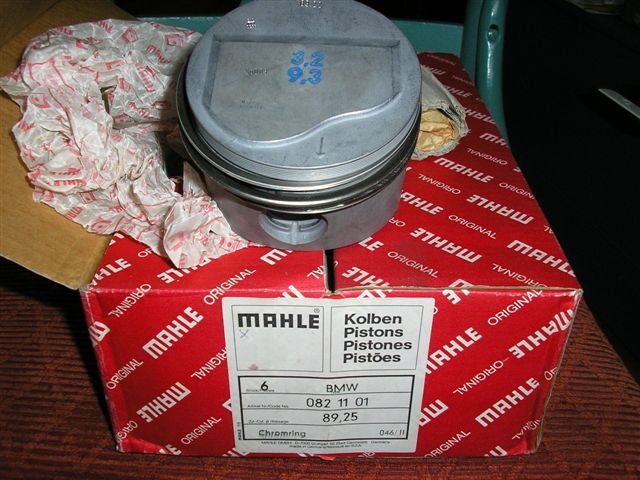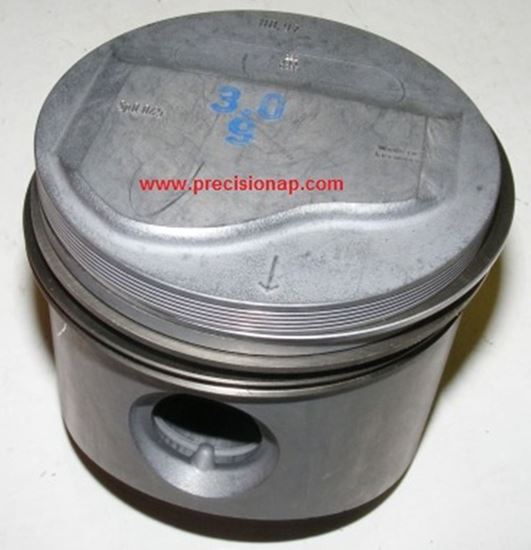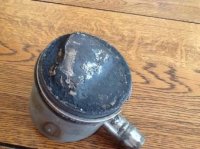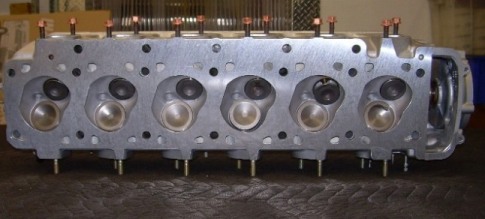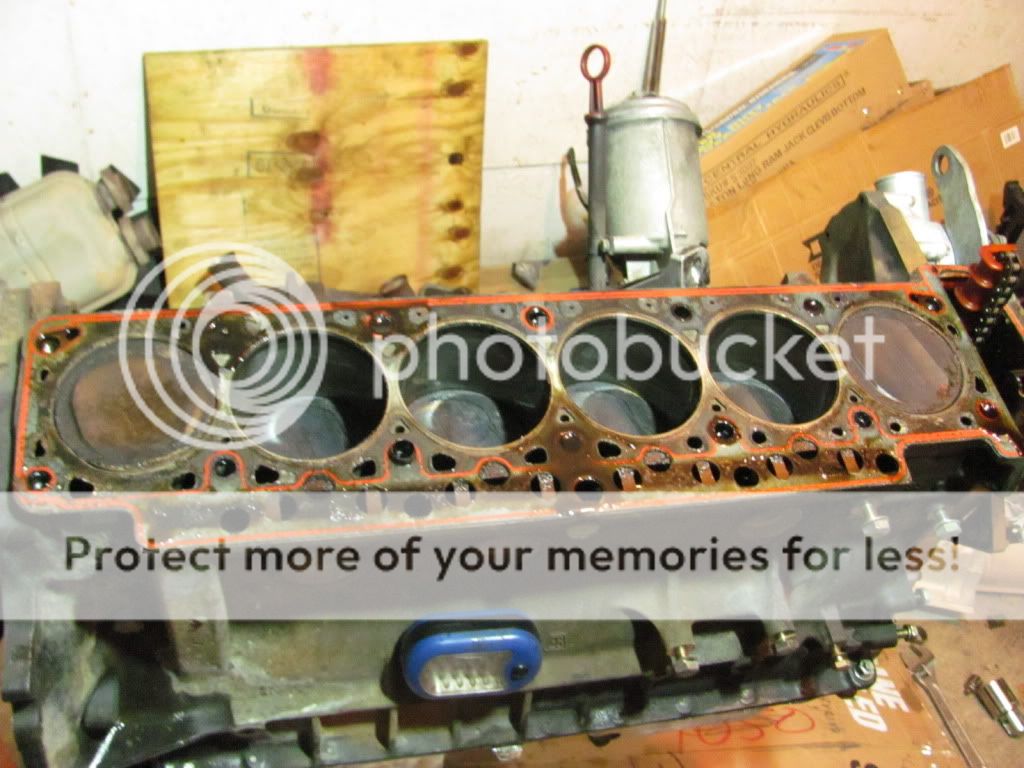The
many cylinder head cracks pictured are unusual for an M30 cylinder head -- including earlier castings.
I believe it has been pointed out in other threads that the major difference between earlier and later heads is water jacket design, including thickness, so that the newer versions are not as open as the earlier versions.
IMHO, the newer heads offer more protection from overheating but are not essential for most pre '74 M30 engines. Some later (post '74) North American Market M30 engines were fitted with extra emission controls that tended to function better with increased engine operating (exhaust) temperatures. See the exhaust gas reactors below. These were the precursors to catalytic converters and clearly introduced significantly higher temperatures to the cylinder heads. In order to avoid related warranty and reliability problems, the factory beefed up its cylinder head design. Again, this "extra" protection is nice but unnecessary for an early M30 engine with a well maintained cooling system -- that operates in the blue. Although I once collected a few new cylinder head spares, fortunately, I never had to use them and they were donated to other causes. As an aside, many M30 engines seemed to be magnets for neglected cooling system maintenance, so that the early design water jackets showed advanced signs of corrosion. In turn, the same serious neglect might make the same cylinder head less able to resist high temperature engine operation and more prone to overheating. Any renewed head design would be an improvement over a significantly corroded head. As it happens, newer water jacket design also included different coolant port sizes that emulate most cylinder head gaskets - so that coolant flow is proportionally restricted for some cylinders. In theory, this design maintains even temperatures for each combustion chamber, but the head gasket seems to serve the same function. More on cracking and overheating
http://www.firstfives.org/faq/cylinder_head/cylinder_head_faq.htm
Returning to Gransin's case study, so many cracks indicate metal failure caused by overheating and/or an engine stressed beyond its design limits. Overheating can be a question of degrees, so that there is mild and not-so-mild variants. There are obviously limits to temperature endurance and the number of (over)heat cycles before the metallurgical stresses begin to show. This is particularly true for an aluminum alloy head. Repeated removal and replacement of a spark plug on a hot engine can both strip threads and cause cracking. A plug that is the wrong heat range can also affect cylinder head integrity after many years of heat cycling -- as can a plug that is too loose, over torqued or cross threaded. Likewise, valves transmit some of their heat to the combustion chamber valve seats. If a valve or valves were deformed due to even slight impact with a piston, it/they will likely no longer seal properly against the valve seat/s. The valve’s ability to transfer combustion heat to the valve seat is also impaired. Presto - cracking occurs. Another possibility might even be a machine shop that did a poor job when installing the valve seats so that unnecessary stress was created in the surrounding metal.
The M30 is an interference engine so that its valve timing must be maintained to avoid valve-piston interference. The double row chain in your picture ordinarily prevents such an occurrence. However, an engine that is poorly assembled (or modified) with altered valve timing can suffer from such damage on the first run. As has been pointed out, interference can also occur when: the stock cylinder head has been excessively milled or, a head gasket is too thin or, the piston crown is altered or, the piston stroke is lengthened. Even on a meticulously constructed, stock engine, there is a reason for that tachometer’s red line, the placement of which, is often governed by valve train design. Missing a shift at speed can easily push an engine far beyond its valve springs' capacity to retract the valve/s -- and -- oops, (it or they) may kiss the corresponding piston crown/s.
Having not viewed a 2.8 liter cylinder head in a long time for direct comparison with a 3.0L casting, I am unclear regarding the exact differences between the two heads, and any obvious advantage between the two. It may be that the internal exhaust and intake passages are slightly different, but other than that, I do not think the head is automatically incompatible with a 3 liter block and vaguely recall seeing one or two such matings. A quick check with Realoem seems to bear this out, although that does not explain why there would be different casting numbers. Without much thought, the other major difference might be each head's ability to accommodate various piston crown designs, but I cannot recall, offhand, a difference in combustion chamber shape or area between the two heads. Instead, I thought the displacement and compression ratios were primarily a function of piston displacement (bore and stroke).
In summary, you may have acquired an engine that was a mishmash of well-worn parts. Even the best rebuilt cylinder head can quickly succumb to metal fatigue when severely overheated or pushed beyond reasonable limits. Also consider that a crack or cracks may not always prevent an engine from running - especially if the cracks become practically non-existent when the metal expands with elevated engine temperature. At some point, something has to give and usually does. This might explain why you did not notice any unusual engine noise when running the 100-meter dash.
Best of luck.
older style head with large water jacket ports
newer style head with smaller water jacket ports













